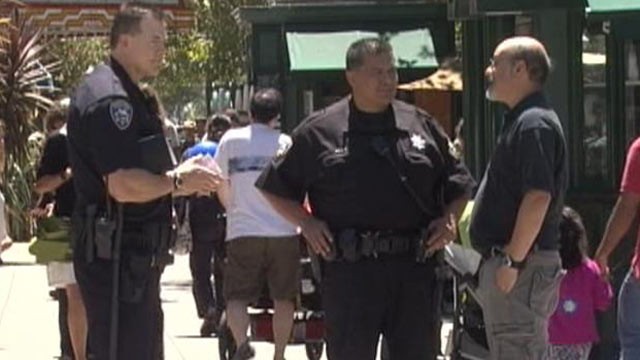From ABC News...
Santa Cruz police are using a computer program to predict where crimes will likely happen in an effort to better utilize its shrinking force.
Police in Santa Cruz are using a complicated math equation to predict where crimes will likely happen in an effort to better utilize their shrinking force stop the bad guys in their tracks.
"Crime is not random," said Zach Friend, the department's crime analyst. "You can actually predict the kinds of things that people will do."
The computer program utilizing this algorithm is at the center of a six-month effort called "predictive policing" that the department started in July. Eight years of crime data were first entered into the program so it could track and pinpoint crimes.
Now it spits out 10 detailed maps daily complete with "hot spots" -- a forecast of where new crimes are most likely to occur.
"Crime is not random," said Zach Friend, the department's crime analyst. "You can actually predict the kinds of things that people will do."
The computer program utilizing this algorithm is at the center of a six-month effort called "predictive policing" that the department started in July. Eight years of crime data were first entered into the program so it could track and pinpoint crimes.
Now it spits out 10 detailed maps daily complete with "hot spots" -- a forecast of where new crimes are most likely to occur.
A specific crime is broken down to the two most likely chunks of time it will probably occur, say noon to 1 p.m. or 4 to 5 p.m., so if an officer is working during that time, he or she knows to check that area.
In the last decade, Santa Cruz saw a 20 percent reduction in its staff but a 30 percent increase in calls for service, according to Friend.
"As we continue budget cuts, as we are facing less and less police officers on the streets, we need to leverage technology to become more effective and efficient," he said.
Lt. Bernie Escalante said that with fewer officers on the streets in Santa Cruz, the technology helped fill the gap. "They give you a map and a square [a hot spot]," he said. "It's very easy to understand [and] hard to screw it up."
It seems to be working. Friend said that since the program's launch, the algorithm had correctly predicted 40 percent of crimes and had led to five arrests. In the last six weeks, Santa Cruz also saw a reduction in property crimes including car and home burglaries. Police said burglaries were down 27 percent in July compared to the same month last year.
Fred Meng, the owner of Cafe Delmarette, said he wished predictive policing had started before a burglar broke into his eatery and stole the cash box.
"Somebody kicked in the door and was able to move the glass enough that they could get in," he said. "Maybe this [the computer program] would have helped."
As reported by The New York Times, the program was developed by a group of researchers including two mathematicians and an anthropologist and based on an earthquake aftershock model.
Friend said the program told officers where a crime was likely to occur as well as when and the type of crime based on analyzing and detecting patterns of past crime data. The information changes as new crimes happen and that data is entered into the program.
"Think of yourself as a police officer," Friend said, "and you have limited amount of patrol time. ... This guides them in a very specific way in that free time of where to go."
Friend said that Santa Cruz police have more than 26 square miles of area to patrol. "If you can get your beat down to such a small area and know to make a few pass-throughs, it makes it much more efficient," he said.
We have one very simple goal here," Friend said. "That's to reduce crime. It's not to arrest people. It's to deter and prevent crime from occurring."
Jesus Ayala contributed this report
Watch the video here:
